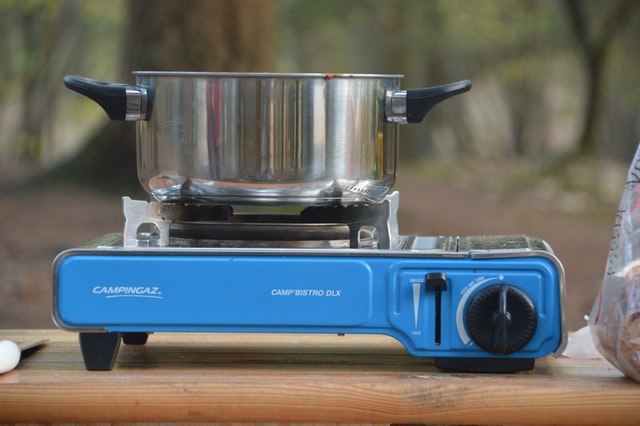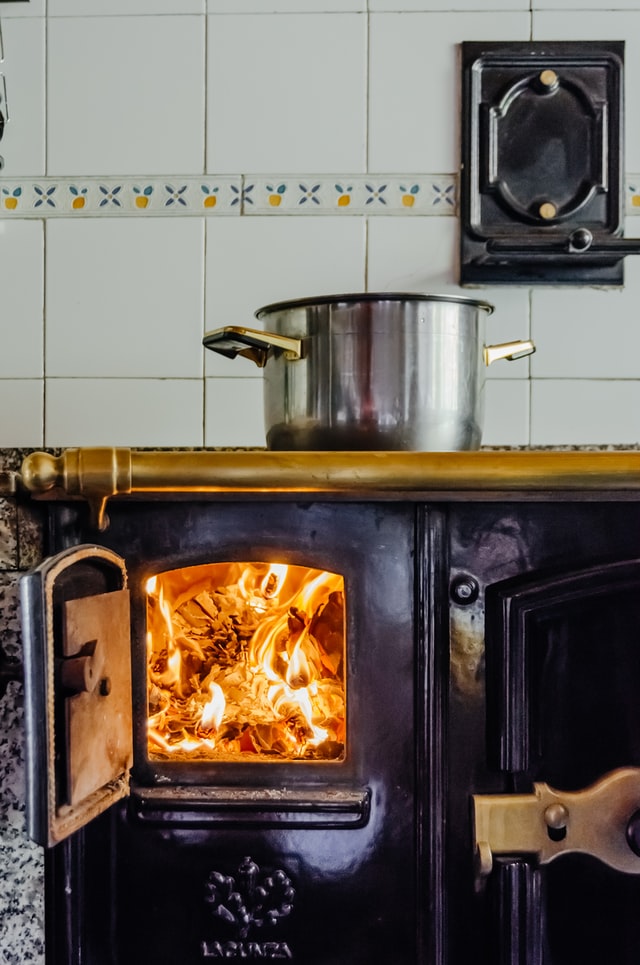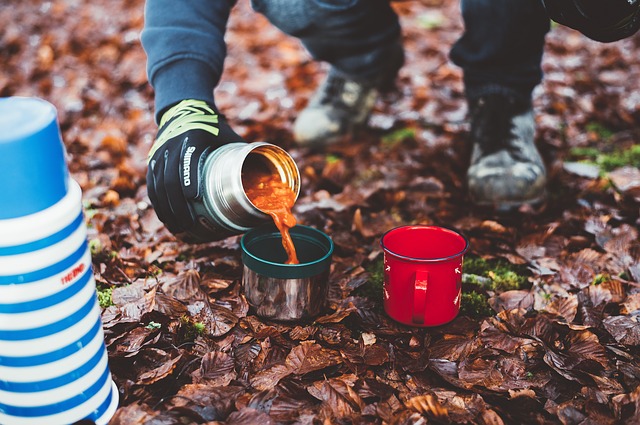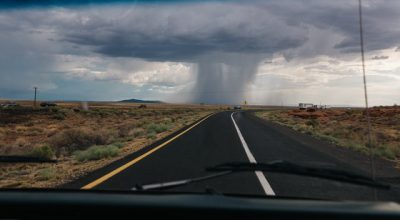A power outage will strike at no particular time. This scenario is most likely to happen during a storm or any other sufficiently destructive natural disaster. In the middle of such an emergency situation, it is actually hard to figure out how you will be able to give your family a hot meal. The good thing is there are various ways of safe indoor cooking without electricity that you can employ.
In this blog post, we will unravel those methods that may help you to easily deal with your cooking problem due to a power outage. But, it is also important to determine things that you should take into account when it comes to cooking indoor safely.
If you’re interested in safe indoor cooking when there is no electricity, read on!
Things to Consider When Planning to Cook Indoor Safely without Electricity
Generally, a lot of people still cook without using electricity, don’t believe me? See how many of your friends still use a gas stove for cooking, I bet a lot right? However, having electricity is very convenient for cooking because it enables you to use the microwave, smoke vents, and also have a reliable light source to illuminate your kitchen.
When you need to do cooking at home during a power outage, there are some important things that you need to consider. These will generally help you to conduct safe indoor cooking without using electricity.
Safety is Priority
As always, safety is always a priority for every scenario. When cooking without electricity and all of it’s associated benefits such as lights and ventilation, you need to prepare safety procedures well. You should first look for a source of illumination so that you can cook safely. Read our guide on how to illuminate your home even without electricity to get a better picture of this.
After that, you need to establish safety procedures to prevent fires. You should also think of a way to dispose of the smoke well so that you or your family won’t have breathing problems.
It’s always a good idea to search for cookware and cooking fuel that’s certified or at least recommended for indoor use. The key here is to read the manual carefully so that you get a good idea of the capabilities and also limitations of the device so you can use it safely.
Work with the Appropriate Cookware
It is always an important step to use the cooking pots and pans appropriate for the cooking method that you will be using. For instance, if you have a narrow and lightweight camp stove, then it is pretty dangerous to use a large cast iron pan because it might trip over and fall.
Choosing the appropriate cookware usually comes with experience in the kitchen. The longer you’ve been cooking, the more knowledgeable you should be on these things. However, most of this knowledge can be analyzed logically with a little bit of logic and rational thinking.
Practice Cooking without the use of Electricity
As with any other task, it’s recommended to practice cooking indoor safely without electricity. The lack of good quality lighting, microwaving, and electric vents might stagger you at first. You may find it difficult to cook this way the first time you try it. Or, your dish might even taste different, even if you are very familiar with the cooking steps.
So, we recommend simulating indoor cooking safely without electricity about a couple of times every year so you get the hang of it. Consider doing it over and over until you are already confident in this new cooking setup and your ability to prepare a good meal.
Consider cooking convenience food
Power outage is generally considered an emergency case. In this kind of situation, it is better to keep in mind that heating up food is always faster than cooking from zero. Remember that the method for safe indoor cooking without electricity usually involves limited fuel. Besides that, you might also have other problems at hand during a blackout so you can’t spend too much time just cooking food.
If you haven’t spent the time to stock up food for these kinds of eventualities, read up on our guide on how to stock up food for a month. You’ll get a better grasp of how to plan meals and store food so that when disaster strikes, you can supplement your cooking with ready-to-eat meals and snacks.
Different Ways for Safe Indoor Cooking without Electricity
Actually, with the help of the right combination of cooking equipment and fuel, you may say that cooking safely without electricity inside your home is really easy. The good thing is there is a number of excellent cooking device certified for indoor use.
Although good to use for indoor cooking, some methods burn fuel and create waste gas such as carbon dioxide and carbon monoxide. Keep in mind that there is a risk of carbon monoxide poisoning when burning fuel inside the house.
With that having said, it is advisable to provide adequate ventilation inside your home. Since safety is the topmost priority here, make sure to have a carbon monoxide detector available on hand. Also, keep your fire extinguisher highly accessible to avoid any fire risk to your house.
Camping stoves

One of the methods for safe indoor cooking without electricity at home is to use camping stoves. Usually, this kind of stove works with gas canisters of propane, butane, or isobutene. This gas camping stove may also run with some other types of fuel such as unleaded gasoline.
KEY POINTS IN USING BUTANE GAS CAMPING STOVES
- Butane is colorless in nature and highly flammable yet can liquefy easily.
- Burning butane gas results in the production of carbon dioxide and carbon monoxide.
- Carefully keep butane gas in a place with above freezing temperature of 32 deg Fahrenheit and below 120 deg Fahrenheit. Make sure that it is far from open flame and other sources of heat.
- Butane is considered as a convenient fuel but generally proffer explosive risk.
- A good performing gas in any conditions, yet butane is quite an expensive one.
- Lightweight and generally safe for indoor use provided that there is enough ventilation
- An 8-ounce butane canister gives of: 2 hours burn time maximum and may last for 4 hours on low heat
- Butane canister recommended shelf life: 8 years
KEY POINTS IN USING PROPANE GAS CAMPING STOVES
- Using propane may generally gives a good hot, clean flame
- A little bit heavier than air, propane gas may have the potential to leak and present an explosive risk
- The by-products that may result from burning propane gas are carbon dioxide, water vapor, and nitrogen.
- Carbon monoxide may occur during an incomplete combustion once there is lack of oxygen.
- Only advisable for use on equipment certified for indoor use
In general, camping stoves are just like your regular gas stoves. The only notable difference is that camping stoves are generally smaller and more portable. If you frequently use gas stoves, you won’t have any problem using camping stoves for cooking indoors.
Alcohol stoves
Aside from using gas camping stoves for indoor cooking, you may also use alcohol stoves. Generally, alcohol is a fuel that is excellent for use in stove cooking as the flame it produces is actually clean. Yet, using alcohol for indoor cooking is quite challenging because of the difficulty in controlling the heat. A lot of preppers are prefer using alcohol stoves over gas camping stoves for indoor cooking and also cooking out in the wilderness.
The common fuels popularly use for cooking over alcohol stoves are pure ethanol, denatured alcohol, and methanol alcohol. Some are also using fuel-line antifreeze which contains pure methanol alcohol as its main component. Although it works, rubbing alcohol does not produce a clean burn. So, it is better to use it outdoor to prevent vapor and smoke inhalation.
DENATURED ALCOHOL
Among the other fuel candidates for the alcohol stoves, denatured alcohol is an excellent choice. It is widely available in all hardware stores and is the recommended fuel for alcohol-operated equipment. If you’re having a hard time finding denatured alcohol in your local hardware store, you can also search for it on Amazon.
ETHANOL OR ETHYL ALCOHOL
This alcohol fuel is nearly around 95 percent alcohol. Generally, ethanol is also known as grain alcohol. Moreover, it is actually a great fuel for cooking that creates an almost invisible blue or almost clear flame. So, be very careful in using it as it may possibly result in burning yourself.
Usually Ethanol is used for fireplaces or ornamental fire, but as we’ve said above, it can also be used for cooking using an alcohol camping stove. Ethanol can be found in most hardware stores and medical supply stores, however, if you have a hard time finding it, you can also search for it on Amazon.
RUBBING ALCOHOL OR ISOPROPYL ALCOHOL
Isopropyl alcohol is generally available in various strengths that you can see in the market. Since it is an acceptable alcohol fuel, you can usually use it on a higher percentage. And remember that the higher percentage of it will burn out better for cooking.
In the market, you can see varieties of rubbing alcohol in three various strengths. These are the 70 percent, 91 percent, and 99 percent strength. The output of this alcohol fuel is a yellow sooty flame. If you’re having a hard time finding this on your regular hardware store, you can search for it on Amazon.
DIY Tuna Can and toilet paper stove
The good thing about this method of indoor cooking without electricity is that it also acts as an emergency light source and heat source. Check the below steps to know how it works:
- Get a can of tuna in oil and open it up.
- Place about 3 pieces of toilet paper lying flatly over the tuna. Generally, the toilet paper is the one to absorb the oil. Moreover, it should produce an air-tight seal all throughout the can lid.
- Let the toilet paper burning on fire. The standard optimal time for burning the tissue paper is about 25 minutes.
- Cook your food using the flame. Moreover, the flame from this DIY stove can also cook the tuna on the can.
However, you should realize that this produces a weaker flame compared to portable gas or alcohol stoves. Because of that you won’t be able to cook bigger meals and it might be useful only to warm a food or provide a source of light during a blackout.
On another note, a pot stand is generally needed here because placing the pot directly over the can stove may kill the flame.
Wood stove

A safe way of indoor cooking during power outages and, at the same time, a good way of heating your home is to use the venerable wood stove.
Wood stoves are what our ancestors use to cook their food during colonial times. It’s dependable and also a very good way of cooking food in absence of electricity.
Yet, one major drawback that it entails is the need for long term planning. You basically need to have a supply of good quality firewood on hand. Most of you living in urban areas won’t have a large supply of firewood so this can be a problem.
On a lighter note, wood stoves usually give off excellent heat. Frying, boiling or even baking tends to be an easy task when you use a wood stove. Aside from that, chopping the woods to be used is a good way of cutting down your body fat. Remember to use a good quality axe to split the firewood.
If you frequently camp, you can also use your portable wood stove to cook things without electricity. It’s easier and more convenient compared to large woodstoves if you’re just heating water or cooking a couple of sausages.
Tea Light Oven
Also known as Home Emergency Radiant Cooking Oven or HERC Oven, this usually works by using tea lights. Placing an enclosed pot over a number of tea lights will trap heat. Through that, it can slowly cook the food contained inside using the trapped heat.
However, it takes up to 8 hours and longer to cook here. Yet, baking your favorite mac ‘n cheese can be done perfectly over this tea-light oven. This tea light oven is actually a great option if you want to bake without electricity. So, a power outage is not a hindrance to bake biscuits, cookies, muffins, and casseroles.
If you don’t have tea lights, you can also use candles as a replacement. However, keep in mind that candles are pretty tall so you might need to cut them down so it will fit inside the pot.
Fireplace
Back in old times when there is no electricity, people used to cook on a wood fireplace. All you need to do is to gather all the cooking tools that you need. Gridiron, trivet, and spit are cooking tools that must be available on hand so you can cook using a fireplace. A dripping pan is a great cooking tool if you plan to roast directly on top of the fire to collect the juices.
Yet, carbon monoxide poisoning is also at risk when using this method. Perhaps, there is also a higher possibility to wreck the fireplace due to food drips over the logs.
However, cooking over a fireplace is a valid alternative when faced with an emergency situation. You won’t do this everyday right?
Hay Box Oven
A Hay box oven is a great idea if you want to safely cook indoors without electricity. The concept of a Hay Box Oven is generally to trap heat and to cook the food using the trapped heat. This concept works by implementing the below steps:
- Initially, heat your food on the pot over an outdoor fire.
- Afterward, place the heated food inside the hay box oven. Make sure to distribute the hay all over the pot.
- Close the hay box and wait for about 8 – 12 hours to finish cooking the food.
Generally, the hay box oven entraps thermal heat which is the one accountable to complete the process of cooking. Food like stews, beans, and other dishes that need to be simmered find this a great cooking option during a power outage inside the house.
Moreover, using this hay box oven is highly advantageous as you do not need to stay outside to finish the cooking. Another advantage of it is the use of lesser fuel. An insulated box is the main thing that you need in preparing a homemade hay box.
However, you need to keep in mind that if you live in an urban area, it might be hard to find an area where you can get hay and store the hay box oven. If you live in big cities, you better move on to thermal cookers and thermos cooking because it’s simply better.
Thermal cookers
Just like the hay box oven, thermal cookers also trap thermal heat in order to cook food without electricity. Basically, the concept also goes the same, you cook or heat the food to the desired cooking temperature, then you leave it in a thermal cooker to cook on its own heat.
Thermal cookers actually contains a cooking pot and lid made of stainless steel to put your food in. There is also a vacuum insulated container on the outside part to reduce heat loss. This is generally double-walled to increase insulation and prevent heat loss.
You can usually complete your cooking process when you use the thermal cooker. It basically holds food at a temperature that may last for about 6 hours. If you’re looking for a thermal cooker, we recommend the Buffalo vacuum sealed thermal container. It’s able to retain heat for more than 10 hours, much longer compared to similar thermal cookers.
Thermos Cooking

Again, this method of cooking during power outages holds a similar concept to that of the hay box oven and thermal cookers. It retains heat so that you can safely cook food without electricity.
This thermos cooking or vacuum insulated bottle cooking usually begins with using a wide-mouth stainless steel thermos. It generally performs its job by holding the heat perfectly due to its vacuum insulated structure.
Here’s how this method works:
- Fill the bottle with hot water as a step in preheating it.
- Prior to the addition of the ingredients inside the bottle, take off the water from it.
- Afterward, add boiling water into the vacuum insulated bottle.
- Secure the lid immediately and shake the bottle for around 20 – 30 seconds.
- Set aside the bottle and let it work on its own.
The best food options for cooking through this method are those foods used to cook in liquids. That generally includes hot cereal, rice, soups, and pasta.
However, you need to keep in mind that indoor cooking methods using thermal heat, there is a higher chance of creating an environment that is generally nourishing for bacteria if the cooking method is not properly done.
Keep in mind that taking out of food from it must not only be warm but are hot having temperature of above 140 degrees. In case the food falls under 140 degrees, immediately heat it up until it boils. That way, any kind of bacteria that may possibly be breeding can be killed instantly.
MRE heaters
The military forces are generally the ones who originally conceptualized the design of the MRE or Meals Ready-to-Eat Heaters as a fast and safe way of cooking without fire or electricity. The components of this MRE heater are iron, sodium, and magnesium in their powdered form and generally, food-grade. Once you put water on those chemicals, there will be a chemical reaction that will immediately heat up the heater pad.
Generally, 5 years is the average shelf life of the MRE heaters. However, if this heater is already old enough, it basically takes a longer time to heat up. Because of that, you should label your date of purchase for the MRE heater, or at least look at its date of manufacture.
Using MRE heating pad is actually a safe way of cooking food indoor without electricity because there is no fire being created by the heating process. However you need to keep in mind of an explosive risk because it may create hydrogen gas that easily displaces into the air
There should also be enough ventilation when you will be using 10 or more of this MRE heater inside a small cooking area. This is to prevent the hydrogen gas from displacing the air and creating an explosion hazard.
Generally, MRE heater pads can be bought of military supplies stores or any other outdoor store. If you’re having problem searching for them, you can buy one from Amazon.
Frequently Asked Questions
Q: IS IT SAFE TO USE A CAMP STOVE INDOORS?
A: The short answer is yes, a camp stove is perfectly safe to use indoors. However, you need to understand that camp stoves are not designed to be used with large cooking pans and pots that you might have at home. You need to carefully consider this to avoid any kitchen disasters.
Besides that, camp stoves might produce harmful vapors and pollutants, especially if you use alcohol stoves. If you want to use an alcohol camp stove indoors, find an area with good ventilation to prevent any respiratory problems.
Q: WHAT MEALS CAN YOU MAKE WITHOUT ELECTRICITY?
A: As we’ve said in the article, you can basically create any kind of meal as long as you have to cooking utensils and heat source to cook said meal. However, meals that require the use of microwaves or ovens might be a little harder to make without electricity.
Q: IS BUTANE SAFE TO STORE INDOORS?
A: Yes it is safe to store butane indoors. Generally, the ideal storage for butane is inside the house. Since the overall size of the butane canister is pretty small, you can put it inside a big drawer, garage, closet, cupboards, and utility storerooms.
However, keep in mind that storing butane under direct sunlight is not a safe idea. So, look for a dark and sunlight-protected area to store a butane canister.
Final Words
When power outage strikes and you have no choice but to cook indoors without electricity, safety should always come first. Just ensure that you clearly understood all the safety measures before proceeding with any indoor cooking method. And once you are already performing it, make sure that you applied everything that you understand about indoor cooking safety precautions.
Keep in mind that most of the cooking methods above use fuels that generally result in the production of carbon monoxide. With that, there is a high risk of developing carbon monoxide poisoning. That’s why you need to be extra careful in doing so. Besides, you will not want to survive the power outage by creating a more dangerous scenario.
Hopefully this article is able to inspire you to safely cook indoors even without using electricity. As we repeatedly say, this is a great skill to have, especially if you live in disaster prone areas.


